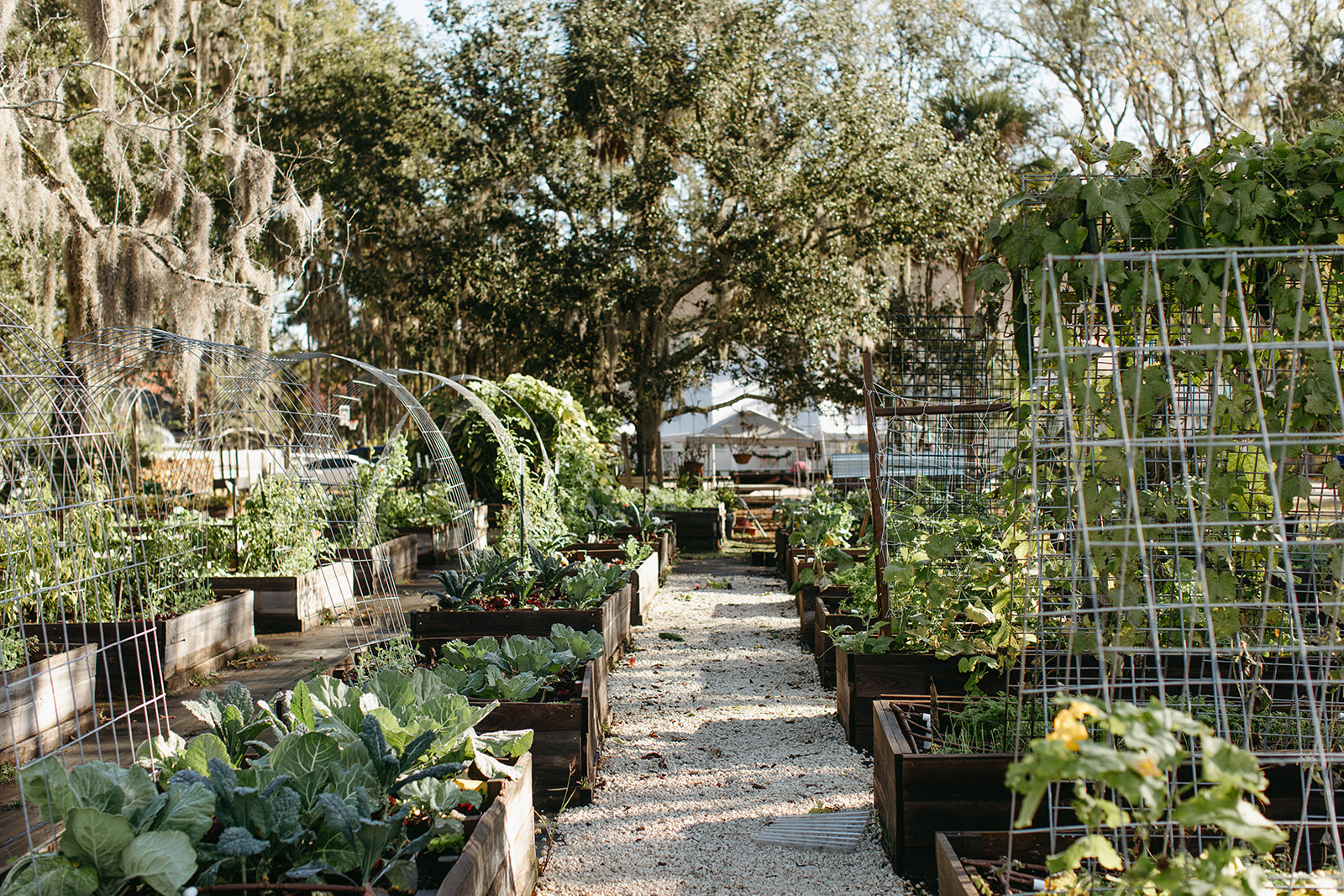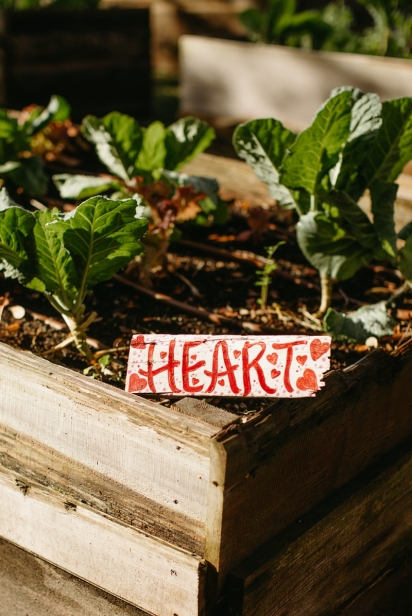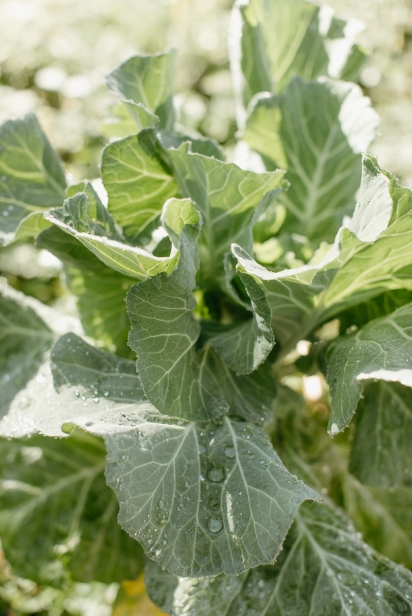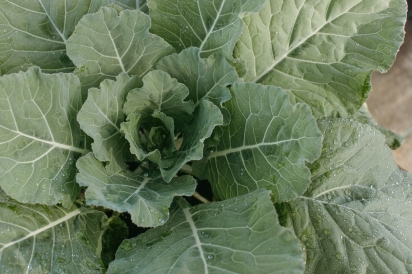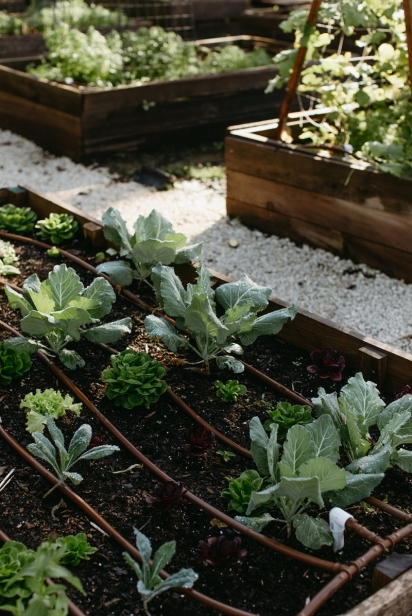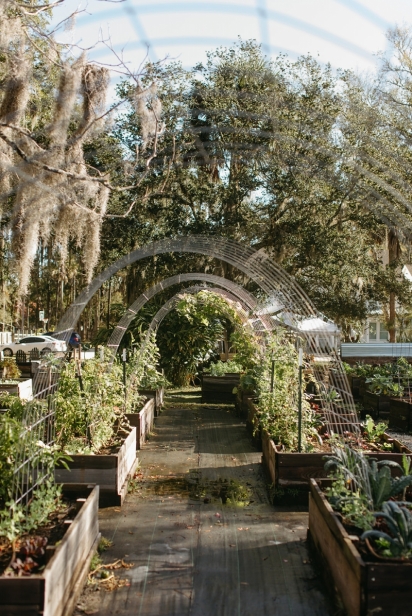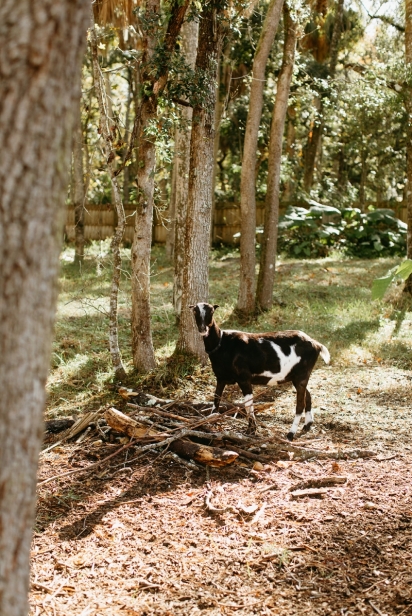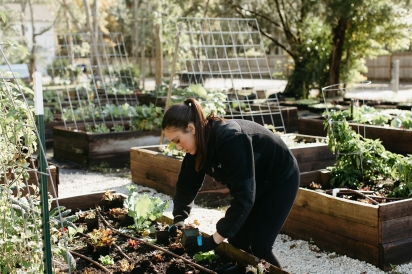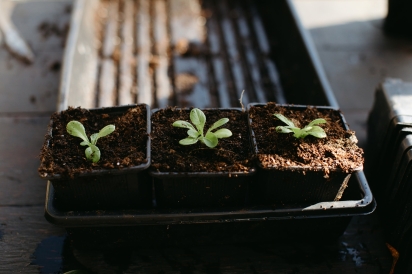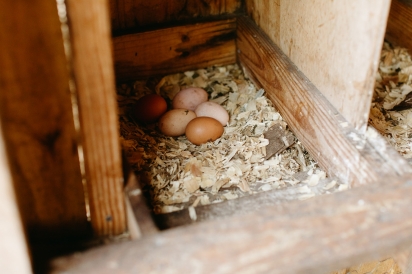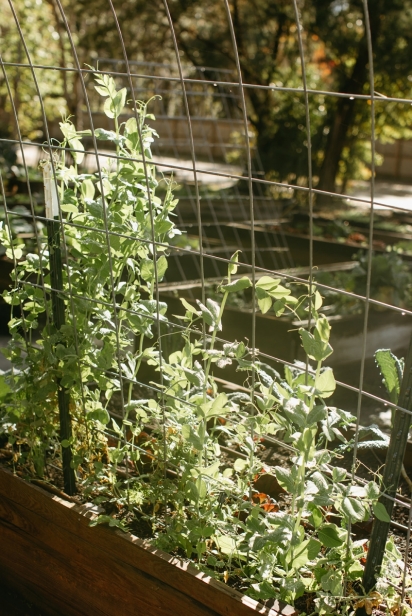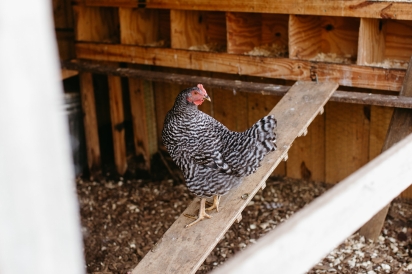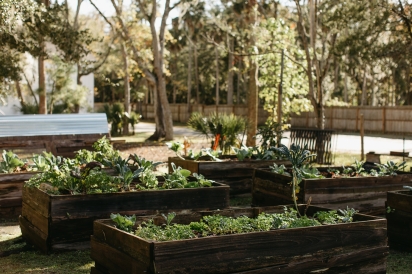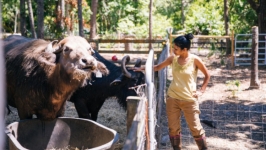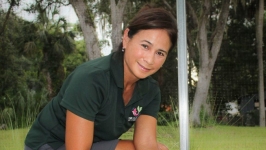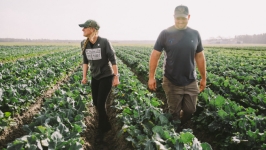Peace of Heart Community
There is no dirt in the farmhouse, which is a bit odd considering the amount of food being grown on the property. The house, in fact, is immaculate and warm. The residents trod in and out of the home to get a breath of air and, more importantly, work the crops. Smiles abound, dirt collects under fingernails and fresh vegetables are nibbled on between assigned tasks. The farm is a no-spray farm, meaning zero chemical pesticides are used on the crops, so grabbing a bite of a fresh pepper is no problem at all.
Peace of Heart Community is a year-round working farm. Two-hundred 4’ x 8’ raised beds offering fresh, seasonal fruits and vegetables are lined up in tidy rows. Patches of mud separate some of the rows, but Peace of Heart Community head garden liaison, Howard Groshell, is working on that.
“The farm has only been open for a few years and this is the third growing season. I’m still working on figuring out the irrigation,” says Groshell, who along with his wife, Amy, cofounded the Peace of Heart Community. “I’d been playing around in the backyard for six or seven years and I had been contemplating the urban garden model for some time before that,” says the former podiatrist turned farmer. “Needless to say, there has been a pretty steep learning curve.”
If growing food is difficult, managing the people working in the garden adds another layer of complexity to the task. The full-time residents of the beautiful and spacious property are young adults on the autism spectrum. Every day they spend time working the beds alongside Howard and other assistants. There is little complication, though, and the time in the garden is the highlight of the day for the residents, who all get to dig, plant and nourish the crops.
“The garden beds are about opening up to and connecting with the community,” says Amy, who helps guide the creative vision of Peace of Heart Community. “The garden serves a lot of purposes, one of the most important being it provides amazing food for the home.”
The Groshells were inspired to create the Peace of Heart Community by their daughter. The 23-year-old is on the autism spectrum and a resident of the home. Only recently becoming verbal through cutting edge typing therapy, the young woman savors her time in the garden, figuratively and literally. She had spent time in other group homes in the area, 24-hour residencies dedicated to the care and well-being of people with autism who may not be able to care for themselves. The homes, usually sterile and short on funds, are heavily regulated by the state.
“I was not happy with the model I was seeing out there. These beautiful people were being separated from the community in most of the group homes,” says Amy. “Our group home is an anti-model. We are working on fixing the things we didn’t like. The model was broken, and the food was, unfortunately, inadequate. These group homes were doing what they could with what they had, but there was room for improvement.”
The word autism originated from the Greek word autos, which means self, Amy shares, highlighting the natural inclination to self-absorption present in some on the autism spectrum. “You couple that with our society’s history of removing those that are different from the everyday and it’s understandable why there are so many misconceptions about autism. It’s always been about exclusion.”
“Our model is reverse inclusion; bring the community to the residents by opening the doors and having a shared experience,” Amy continues. “Our residents have such a sense of pride when they welcome guests to their home and their space. The residents take such ownership in the garden and the house. People who have very little experience with autism come here and learn about the residents and their time with hands in the soil.”
Residents, alongside their welcomed guests, engage in what can be described as horticultural therapy. According to the American Autism Association, through gardening individuals with autism can develop and advance their behavioral, social and sensorimotor skills. Communication, cooperation and camaraderie, skills that may often not come naturally to an individual with autism, are enhanced through the calm and repetitive nature of digging, planting and weeding.
The Groshells have observed these benefits firsthand. For their daughter, the time in the garden is a wellspring of health and advancement. She, like others in the group home, has shed excess weight and experienced clearer skin, according to Amy. Howard says she is better able to complete guided tasks in the garden and has a vibrancy to her that was formerly absent. “The key has been breaking up the operation of the farm into small tasks that the residents can complete. From digging with your hands, to planting the seeds, there are great accomplishments to be celebrated,” Howard says.
“Any business, especially a farm, has issues with sustainability, but we’re working on that piece too for the near future,” Amy says. The answer is in the raised beds themselves. People sponsor a box, the team grows it, then the public takes home the harvest. The 200 raised beds are currently sold out, with possible addition of more down the road, but there is more food being grown than consumed. The residents consume just over 2% of the crops and the owners of the beds come on a regular basis to share in the bounty. Yet, there is still plenty to go around.
Howard is working on the solution by planning a weekly market. “We have such a good variety and quantity of food that we have an opportunity to have folks come and share in what we’re doing,” Howard says. He is working on a pole barn, an open space that lends itself to gatherings and camaraderie, and he is hoping to have it ready by early 2020. Families with children on the spectrum are always welcome, but so is anyone willing to help with gardening chores at Peace of Heart Community.
“My mind is festive and celebratory, and we invite anyone to join the festivities,” Howard says. “I’ve never been a fan of the model which sells a sad story – especially here, because this is no sad story. This is a community celebration. Peace of Heart is completely about giving. The farm and the home are a gift to the community.”


